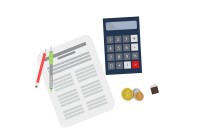- Home
- Business Processes
- Industry Knowledge
- Aerospace Industry
- Automotive Industry
- Banking Domain
- BFSI Industry
- Consumer/ FMCG Industry
- Chemicals Industry
- Engineering & Construction
- Energy Industry
- Education Domain
- Finance Domain
- Hospitality Domain
- Healthcare Industry
- Insurance Domain
- Retail Industry
- Travel and Tourism Domain
- Telecom Industry
- Leadership Skills
- eLearning
- Home
- Functional
- Order to Cash
- What is Order to Cash
What is Order to Cash
Learning objectives for this lesson are: Meaning of Order to Cash Process; Sub Processes under Order to Cash; Process Flow for Order to Cash; Key Roles & Transactions; Key Setups/Master Data Requirements.
Meaning of Order to Cash
- Order to Cash (also known as O2C) manages the life-cycle of a sales process
- This process encompasses the sub processes of receiving and processing customer sales
- A contractual relationship is established with the buyer (This is an Optional step and some businesses need a formal agreement before they can execute orders)
- Orders are received via different sales channels
- Orders are fulfilled through shipping and logistics
- Invoice is generated and booked as Sales
- Debt is recorded and pursued through collections management
- Funds are received and accounted using cash applications
Sub Processes under Order to Cash Functional area:
- Credit Management
- Managing the credit profile of your customer and putting checks and holds on amount of credit that can be extended to one customer
- Order Management (Creation of order/Booking of order)
- The process from taking the order and booking the same in the system
- Order Fulfillment
- Making sure that the firm has the product available that can be shipped to the customer
- Distribution – Shipping and Logistics Management
- Actual shipping of the product to the customer
- Invoicing/Customer Billing – Account Receivable Process
- Raising an invoice to the customer as per the regulatory requirements
- Customer Collections
- Dunning process and reminding customer about outstanding dues and collecting the money
- Cash Application
- Accounting for the cash against a particular invoice
- Dispute Management
- Handling disputes or adjustments arising in the natural course of business
Process Flow for Order to Cash Process
- Sales Quotation
- Providing a quotation about the quality, price and conditions of sale or product
- Sales Order
- Acknowledging the receipt of an order from the customer and its specifications
- Credit Management
- Ensuring the customer is credit worthy and credit can be extended to the customer
- Shipment
- Sending the goods to the Ship To location; and sending the invoice to the bill to location
- Billing/Invoicing
- Sending the invoice to the customer that is fully complaint with the legal framework
- Collections Management
- Reminding the customer, issuing dunning letters and collecting the money
- Dispute Management
- Addressing the disputes or adjustments due to various reasons
- Customer Returns Management
- Handling the goods that have been returned by the customer
- Customer Payments
- Receiving the payments from customers and depositing them in bank
- Cash Application
- Knocking off a particular invoice against the cash or payment that has been received
- Accounting
- Ensuring proper accounting during the process
- Reporting
- Making available the required reports to the management
Key Roles during the process - Order to Cash
- Sales Personnel
- Order Entry and Management
- Account Receivable Accounting
- Finance
- Materials Management
- Partner / Customer Management
- Key Transactions during the
- Order to Cash Process
- Sales Quotation
- Sales Order
- Goods Shipment
- Return from Customer
- Return Material Receipt
- Create Shipments from Orders
- Sales Invoice
- Create Invoices from Orders
- Generate Invoices
Key Setups / Perquisites
Some key master elements or setups are prequiste to this process before transactions can take place in any ERP or system:
- Sales Products
- Prices configuration
- Customers Setup
- Credit Scores/Credit Management/Credit Holds
- Shipping Rules
- Ship to/Bill to Setups
- Sales Document types
- Sales Invoice Formats / Commissions and Accounting Rules
- Taxes on Sales – Tax Setups
- Sales Agreements Setups
- Revenue Recognition Rules
Related Links
You May Also Like
-
This article discusses the key documents generated during the order to cash process. Learn the documents that are created while processing AR transactions and business significance of each of these documents. This article is applicable to all ERP's and systems.
-
Miscellaneous Warehouse Processes
At the end of each inventory control, the Contractor provides the Ordering Person with an inventory report which contains a list of all stock adjustments. The Ordering Person uses the report to create, by use of his/her own means, necessary value and accounting adjustments related to the stock. Let us look at some to the mislaneous warehouse processes not covered earlier.
-
This article discusses the key documents that gets generated during the import/export process. These documents may apply to both invoice to cash as well as order to cash cycles. Also learn the major custom docments for India.
-
Types of Inventory Count Processes
While dealing with lots of inventory in a warehouse, lots of things can go wrong. Shipments may not have the right number of units in them, or they could get damaged somewhere along the supply chain. Discrepancies in the stock may arise as part of every inventory control, and need to be corrected immediately after the inventory control procedure has been finished.
-
Types of Order Picking Methods in the Warehouse
There are many different types of picking in a warehouse and each one works as a customized solution for each business. Depending on the size of your warehouse and inventory, the manpower you have on hand, and the number of customer orders made each day, there may be certain methods that are more efficient for you than others.
-
Warehouse management and distribution logistics involve the physical warehouse where products are stored, as well as the receipt and movement of goods takes place. Warehouse management aims to control the storage and movement of products and materials within a warehouse. These operations include the receipting of inwards goods, tracking, stacking and stock movement through the warehouse.
-
Resource Planning is the process of planning for expected workload and determining the number of resources required to complete each activity in the warehouse. There are many types of warehouse positions, and they also vary by the employer, the scale of operations and location. Discussed here are generic positions applicable to warehouse management processes.
-
What is Invoice to Cash Process
In this article, we will explore the business process area known as; Invoice to Cash; Also known as I2C. Learning objectives for this lesson are: Meaning of Invoice to Cash Process; Sub Processes under Invoice to Cash; Process Flow for Invoice to Cash; Key Transactions Fields; Key Setups/Master Data Requirements.
-
To stay competitive in today’s tough market, the location of your warehouse is vital. To grow retail business need to offer to customers faster and affordable shipping time, which is dependent on the warehousing location as the location of the warehouse affects the transit time to ship orders to customers.
-
What is a Warehouse & why companies need them?
All organizations hold stocks. In virtually every supply chain, gaps exist between when something is produced and when a customer is ready to buy or receive it. Stocks occur at any point in the supply chain where the flow of materials is interrupted. This implies that products need to be stored during this period of gap.
Explore Our Free Training Articles or
Sign Up to Start With Our eLearning Courses

About Us
Learning
© 2023 TechnoFunc, All Rights Reserved










